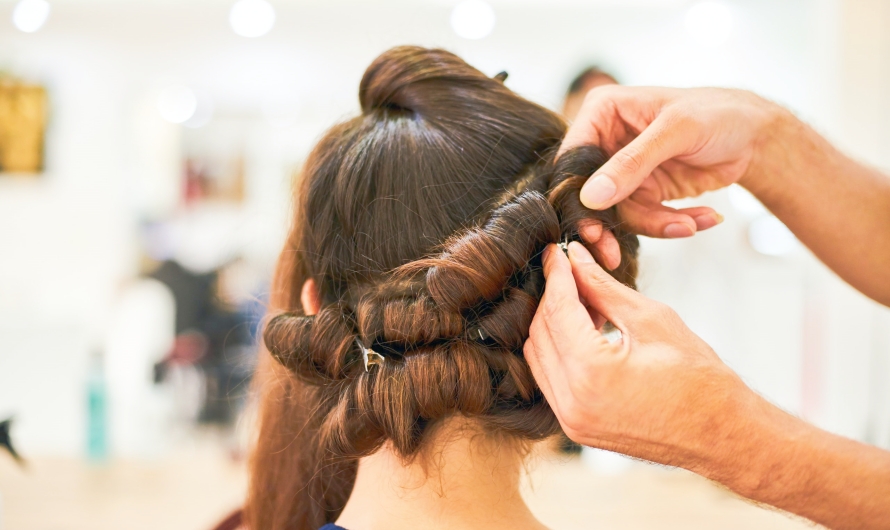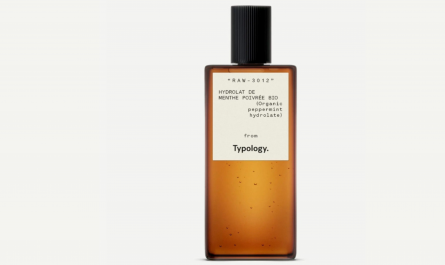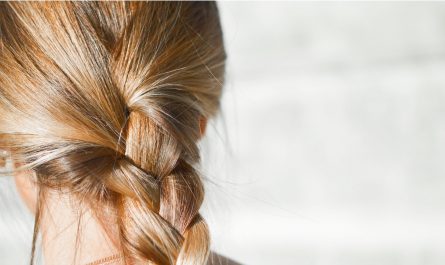Do you want to have beautiful, healthy, and stylish hair? Of course you do! But how do you achieve that without spending a fortune on salon visits, products, and tools? Well, the answer is simple: listen to the experts. Professional hairstylists have years of experience and knowledge in dealing with all kinds of hair types, styles, colors, and problems. They know what works and what doesn’t, what’s trendy and what’s timeless, what’s easy and what’s challenging. In this article, we’ll share with you some of the best hair tips and hacks from professional hairstylists that will help you take care of your hair at home. Whether you want to choose the right shampoo and conditioner for your hair type, style your hair without damaging it, keep your hair healthy and shiny, or experiment with different colors and cuts for your hair, we’ve got you covered. Read on to discover the secrets of professional hairstylists that will transform your hair game.
How to Choose the Right Shampoo and Conditioner for Your Hair Type
One of the most basic but essential steps in taking care of your hair is choosing the right shampoo and conditioner for your hair type. Not all shampoos and conditioners are created equal. Some are designed for dry hair, some for oily hair, some for normal hair, and some for combination hair. Using the wrong shampoo or conditioner can make your hair look dull, greasy, frizzy, or limp. So how do you know which shampoo and conditioner are right for you? Here are some tips from professional hairstylists:
- Dry hair: If your hair is dry, brittle, or prone to breakage, you need a shampoo and conditioner that are moisturizing, nourishing, and gentle. Look for ingredients like shea butter, coconut oil, argan oil, honey, or aloe vera that can hydrate and repair your hair. Avoid ingredients like sulfates, alcohols, or salts that can strip your hair of its natural oils and moisture. Wash and condition your hair no more than twice a week to prevent further drying.
- Oily hair: If your hair is oily, greasy, or flat, you need a shampoo and conditioner that are clarifying, balancing, and lightweight. Look for ingredients like tea tree oil, lemon, mint, or apple cider vinegar that can cleanse and refresh your hair. Avoid ingredients like silicones, oils, or waxes that can weigh down your hair and make it look oilier. Wash and condition your hair every other day or as needed to remove excess oil and dirt.
- Normal hair: If your hair is normal, meaning it’s neither too dry nor too oily, you have more flexibility in choosing your shampoo and conditioner. You can use a shampoo and conditioner that are suitable for all hair types, or you can customize your products according to your specific needs and preferences. For example, if you want more volume, look for ingredients like rice protein, biotin, or caffeine that can boost your hair’s thickness and fullness. If you want more shine, look for ingredients like keratin, silk, or panthenol that can smooth and polish your hair. Wash and condition your hair every two to three days or as needed to keep it clean and healthy.
- Combination hair: If your hair is combination, meaning it’s dry at the ends but oily at the roots, you need a shampoo and conditioner that are hydrating but not heavy. Look for ingredients like jojoba oil, avocado oil, or almond oil that can moisturize your ends without making your roots greasy. Avoid ingredients like sulfates, alcohols, or salts that can dry out your ends or irritate your scalp. Wash and condition your hair every two to three days or as needed to balance your hair’s moisture levels.
How to Style Your Hair Without Damaging It
Another important step in taking care of your hair is styling it without damaging it. We all love to change up our look with different hairstyles, whether it’s a sleek ponytail, a bouncy curl, or a straight bob. But using too much heat, tension, or chemicals on our hair can cause damage over time. Damage can manifest as split ends, breakage, frizz, dullness, or color fading. To avoid these problems, here are some tips from professional hairstylists:
- Use heat protectant products: Before you use any hot tools like blow-dryers, curling irons, or straighteners on your hair, make sure you apply a heat protectant product first. This can be a spray, a cream, a serum, or a oil that can create a barrier between your hair and the heat source. Heat protectant products can reduce the amount of heat damage by up to 50%, according to some studies. They can also add shine, smoothness, and hold to your hairstyle.
- Use the right tools and techniques: When you use hot tools on your hair, make sure you use the right ones for your hair type and desired outcome. For example, if you have fine hair and want more volume, use a round brush and a blow-dryer with a nozzle attachment to lift your roots and create bounce. If you have thick hair and want more definition, use a curling iron with a clamp or a wand to create waves or curls. If you have curly hair and want more smoothness, use a flat iron with ceramic plates to straighten your hair. Whatever tool you use, make sure you adjust the temperature according to your hair type and condition. Fine or damaged hair needs lower heat settings (below 200°F), while thick or healthy hair can handle higher heat settings (up to 450°F). Also make sure you don’t hold the tool on one section of your hair for too long (no more than 10 seconds), as this can cause overheating and burning.
- Trim your hair regularly: One of the best ways to prevent damage from styling is to trim your hair regularly. Trimming your hair every six to eight weeks can help you get rid of split ends and breakage that can make your hair look dull and unhealthy. Trimming can also help you maintain your shape and style better by removing excess weight and bulk from your hair.
How to Keep Your Hair Healthy and Shiny
Besides choosing the right shampoo and conditioner and styling your hair without damaging it,
you also need to take care of your hair from the inside out. Your hair reflects your overall health
and well-being. If you want to have healthy and shiny hair, you need to pay attention to what
you eat, drink, and supplement. You also need to treat your hair with some extra love and care
every once in a while with some masks, oils, and treatments. Here are some tips from
professional hairstylists:
- Eat well: Your diet plays a big role in the health of your hair. Your hair is made of protein, so you need to eat enough protein-rich foods like eggs, meat, fish, nuts, and beans to support your hair growth and strength. You also need to eat foods that are rich in vitamins, minerals, and antioxidants that can nourish your hair and scalp, such as fruits, vegetables, whole grains, and seeds. Some of the best nutrients for your hair include vitamin A, vitamin B complex, vitamin C, vitamin E, iron, zinc, and omega-3 fatty acids. Try to avoid foods that are high in sugar, salt, or processed fats that can dehydrate your hair and cause inflammation.
- Drink water: Another way to keep your hair healthy and shiny is to drink enough water. Water helps to hydrate your hair and scalp, as well as flush out toxins and impurities that can affect your hair quality. Water also helps to regulate your blood circulation, which delivers oxygen and nutrients to your hair follicles. Aim to drink at least eight glasses of water a day, or more if you exercise or live in a hot or dry climate.
- Supplement wisely: Sometimes, your diet may not provide you with all the nutrients you need for your hair health. In that case, you may want to consider taking some supplements that can boost your hair growth and condition. However, before you take any supplements, make sure you consult with your doctor or pharmacist first to avoid any potential interactions or side effects. Some of the most popular supplements for hair include biotin, collagen, keratin, and multivitamins.
- Use hair masks: One of the best ways to treat your hair with some extra love and care is to use hair masks. Hair masks are deep conditioning treatments that can moisturize, nourish, repair, and protect your hair. You can use store-bought hair masks that are formulated for your hair type and needs, or you can make your own hair masks at home with natural ingredients like yogurt, honey, avocado, banana, coconut oil, olive oil, or egg. To use a hair mask, apply it to your damp or dry hair from roots to ends, cover your hair with a shower cap or a towel, and leave it on for 15 to 30 minutes. Then rinse it off with lukewarm water and shampoo and condition as usual. You can use a hair mask once or twice a week depending on your hair condition.
- Use hair oils: Another way to treat your hair with some extra love and care is to use hair oils. Hair oils are natural or synthetic oils that can seal in moisture, add shine, smooth frizz, and prevent damage. You can use different types of oils for different purposes and effects on your hair. For example, coconut oil is great for moisturizing dry or damaged hair; argan oil is great for adding shine and softness to dull or frizzy hair; jojoba oil is great for balancing oily or combination hair; castor oil is great for stimulating hair growth and thickness; and tea tree oil is great for soothing irritated or flaky scalp. To use a hair oil, apply a few drops to your palms and rub them together. Then run your fingers through your damp or dry hair from mid-lengths to ends. You can use a hair oil before or after styling your hair depending on your preference.
- Use hair treatments: The last way to treat your hair with some extra love and care is to use hair treatments. Hair treatments are specialized products that can target specific problems or goals for your hair. For example, if you have dry or damaged hair, you can use a protein treatment that can rebuild and strengthen your hair structure; if you have dull or faded hair color, you can use a color treatment that can enhance and preserve your hair color; if you have thinning or falling hair, you can use a growth treatment that can stimulate and nourish your hair follicles; and if you have frizzy or unruly hair, you can use a smoothing treatment that can tame and control your hair. To use a hair treatment, follow the instructions on the product label or consult with your professional hairstylist for guidance. You can use a hair treatment once or twice a month depending on your hair condition and needs.
How to Experiment with Different Colors and Cuts for Your Hair
The final step in taking care of your hair is experimenting with different colors and cuts for your hair. Changing your hair color or cut can be a fun and exciting way to express your personality, creativity, and mood. It can also help you refresh your look, boost your confidence, and complement your features. However, changing your hair color or cut can also be a risky and challenging process that requires careful planning, preparation, and maintenance. Here are some tips from professional hairstylists on how to experiment with different colors and cuts for your hair:
- Consider your factors: Before you decide to change your hair color or cut, you need to consider some factors that can affect your choice and outcome. These factors include your skin tone, face shape, lifestyle, budget, and commitment. For example, if you have a warm skin tone, you may want to choose a hair color that has warm undertones like golden, copper, or caramel; if you have a round face shape, you may want to choose a hair cut that has layers, angles, or volume to balance your features; if you have a busy lifestyle, you may want to choose a low-maintenance color or cut that doesn’t require frequent touch-ups or styling; if you have a tight budget, you may want to choose a more affordable color or cut that doesn’t involve expensive products or services; and if you have a low commitment level, you may want to choose a temporary or semi-permanent color or cut that doesn’t last long or damage your hair.
- Find inspiration: Once you have considered your factors, you need to find some inspiration for your new look. You can look for inspiration from various sources like magazines, websites, social media, celebrities, friends, family, or even yourself. You can also use some tools like virtual makeover apps, online quizzes, or color wheels to help you visualize and narrow down your options. The key is to find something that suits your taste, personality, and goals.
- Seek guidance: After you have found some inspiration, you need to seek some guidance from a professional hairstylist. A professional hairstylist can help you achieve your desired look by giving you expert advice, recommendations, and services. They can also help you avoid potential mistakes, disasters, or regrets by assessing your hair condition, explaining the pros and cons of each option, and performing the necessary procedures with skill and care. To find a good professional hairstylist near you, you can ask for referrals from your friends, family, or online reviews; you can browse through their portfolios, websites, or social media accounts; or you can book a consultation with them to discuss your expectations and preferences.
- Maintain your color and cut: The last tip on how to experiment with different colors and cuts for your hair is to maintain your color and cut after visiting the salon. Maintaining your color and cut can help you prolong your results, protect your hair health, and save your money and time. To maintain your color and cut, you need to follow some best practices such as using color-safe or sulfate-free shampoos and conditioners; using heat protectant products and limiting the use of hot tools; using color-enhancing or toning products to prevent fading or brassiness; using deep conditioning or protein treatments to repair and nourish your hair; trimming your hair every six to eight weeks to keep your shape and style; and visiting your professional hairstylist for touch-ups or adjustments as needed.
Conclusion: Summary of the main points and a call to action for the readers
In conclusion, we have shared with you some of the best hair tips and hacks from professional hairstylists that will help you take care of your hair at home. We have covered how to choose the right shampoo and conditioner for your hair type, how to style your hair without damaging it, how to keep your hair healthy and shiny, and how to experiment with different colors and cuts for your hair. By following these tips and hacks, you can have beautiful, healthy, and stylish hair that will make you feel good about yourself. So what are you waiting for? Try some of these suggestions today and see the difference for yourself. And don’t forget to share your feedback with us in the comments section below. We’d love to hear from you. And if you want more articles on related topics, make sure you check out our website for more information.
FAQs: Frequently asked questions about hair tips and hacks from professional hairstylists
Q1: How often should I visit a professional hairstylist?
A1: The answer depends on your hair type, condition, style, color, and personal preference. Generally speaking, you should visit a professional hairstylist every six to eight weeks for a trim or a touch-up; every three to four months for a color change or a major cut; and every six to twelve months for a special occasion or a makeover.
Q2: How can I find a good professional hairstylist near me?
A2: The best way to find a good professional hairstylist near you is to ask for referrals from your friends, family, or online reviews. You can also browse through their portfolios, websites, or social media accounts to see their work and style. Or you can book a consultation with them to discuss your expectations and preferences.
Q3: How can I communicate my expectations and preferences to my professional hairstylist?
A3: The best way to communicate your expectations and preferences to your professional hairstylist is to be clear, honest, and realistic. You can also show them some pictures or examples of what you want and what you don’t want. You can also ask them questions or feedback on their suggestions or recommendations.
Q4: How can I save money on professional hairstyling services?
A4: The best way to save money on professional hairstyling services is to do some research and compare prices before booking an appointment. You can also look for discounts, coupons, or promotions that may be available at certain times or places. You can also ask for referrals or loyalty programs that may offer rewards or benefits.
Q5: How can I show appreciation to my professional hairstylist?
A5: The best way to show appreciation to your professional hairstylist is to tip them generously (15% to 20% of the service fee), compliment them sincerely (on their skill, service, or personality), refer them to others (friends, family, or online reviews), and return to them regularly (for maintenance or new services).




